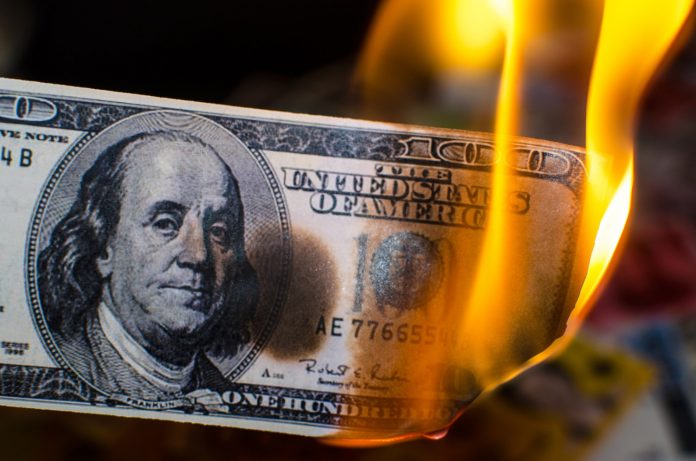Stocks erupted for major gains this morning following the release of better-than-expected inflation data. Last week, a cool Consumer Price Index (CPI) spiked the market higher. Today, the Producer Price Index (PPI) had a similar effect.
October’s PPI fell to +8.0% year-over-year (YoY), beating the +8.3% estimate with ease. Core PPI, which excludes food and energy costs, had the more important “beat,” however, coming in at +6.7% YoY vs. 7.2% expected.
The Fed is watching core inflation closer than headline, as core price gains tend to be “stickier” than the headline variety.
Bulls celebrated the good news this morning, sending the Dow, S&P, and Nasdaq Composite sharply higher in response. Even shelter inflation, which has spent the last few months surging, could be starting to moderate.
“Core PPI and the core PCE deflator follow very similar tracks, though the surge in rents this year has driven an unusually large wedge between them,” wrote Ian Shepherdson, Chief Economist at Pantheon Macroeconomics.
“But the pace of rent increases has peaked, and our chart suggests that the steep drop we expect to see in core PPI inflation will drag down the core PCE measure faster than markets and the Fed expect.”
The PCE, or Personal Consumption Expenditures Index, is commonly viewed as the Fed’s favorite inflation gauge. A falling core PCE would certainly increase the odds of a Fed pivot in December. Shepherdson believes today’s PPI reading indicates an imminent PCE drop.
And he’s probably right. But does that mean inflation has peaked?
Maybe, maybe not. Back in May, strategists made very similar remarks after the April CPI showed that the YoY price gains were slowing. April’s CPI clocked in at +8.22% YoY, down from +8.55% in March.
Wall Street unanimously said that inflation had peaked.
Then, in July, the June CPI data was released, revealing a stunning +8.99% YoY print, blowing away March’s supposed “peak,” prompting many analysts to predict even hotter inflation in July and August.
But a broken-down supply chain caused a CPI slump in July, courtesy of the “bullwhip effect” – something we covered last summer. Retailers were forced to mark down surplus merchandise, cutting deeply into July’s inflation gain. Inflation trended lower from there as stocks rallied through the end of the summer.
Analysts are once again ready to say that inflation will continue to decelerate. Can such a bold prediction be made, though? If the Fed steps off the gas next month and unveils a 50 basis point hike (vs. a 75 basis point one), inflation could begin to creep higher again. Add that to the fact that energy costs are expected to increase as well.
Bank of America’s infamous Fund Managers Survey came out today, and in it, investors learned that 92% of survey respondents thought the US would enter a period of “stagflation” – stagnant growth, high inflation – next year. Analysts may be ready to call a long-term drop in inflation, but money managers feel overwhelmingly different about the matter.
“Sentiment [is] still uber-bearish,” said B of A’s Michael Hartnett, who is coincidentally also regarded as one of the market’s biggest bears.
As a result, the story of the next few months will probably be:
A volatile rally through Thanksgiving that culminates with a “Santa Rally” following the jobs report on December 2nd, which only intensifies after the Fed raises rates by just 50 basis points on December 14th.
The November CPI comes out on December 13th, potentially delivering another bullish boost prior to Powell’s post-FOMC speech.
In short, a hurricane of bullish impulses is potentially coming down the pipe, leading into what could be one of the market’s most impressive short-term rallies of all time.
After that, though, the market should look extremely overbought. A stiff January correction could easily follow (especially if December’s CPI shows that inflation is trending higher again) as stocks re-enter their longer-term bear market due to emerging signals of “stagflation.”








